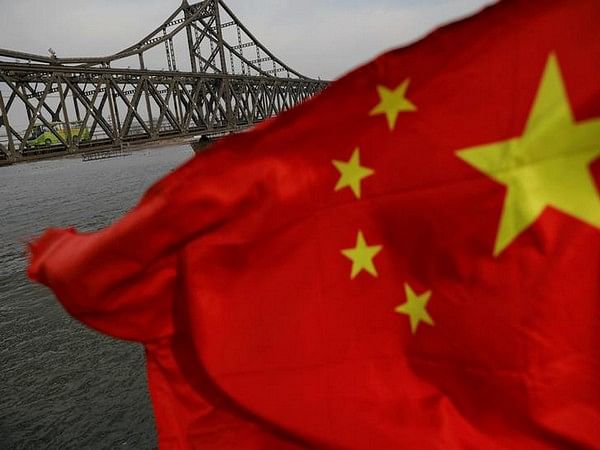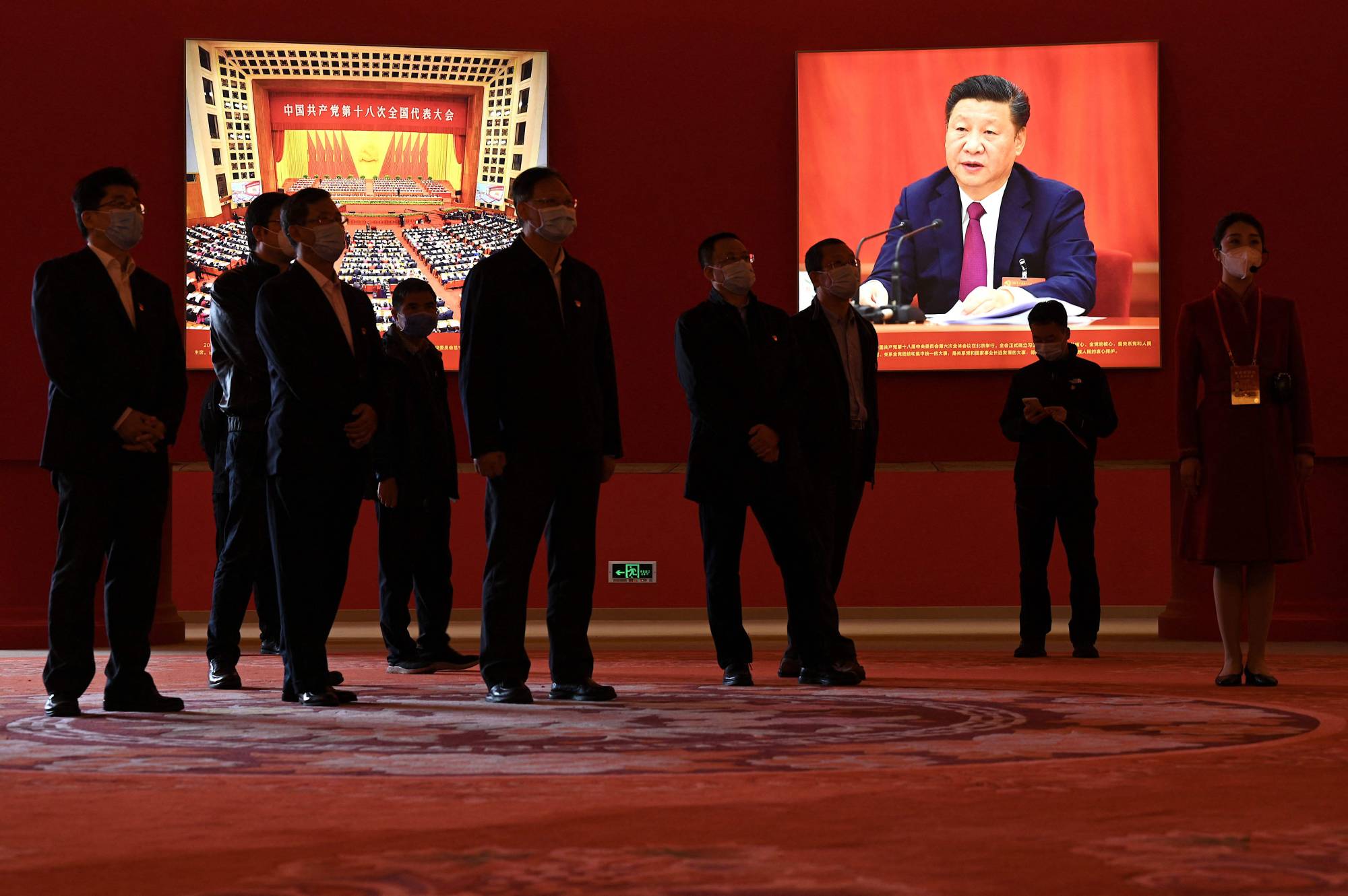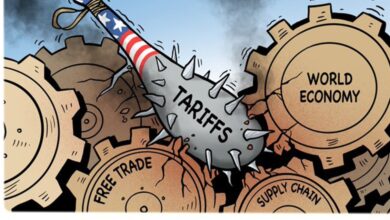Goldman Sachs Sets Sights On India’s Wealthy, Expands Credit Operations In India; In Sharp Contrast, China Hasn’t Been This Scary For Investors In 25 Years
In a move to capitalize on the evolving dynamics of the global economy, Goldman Sachs Group Inc. is intensifying its focus on India's flourishing financial sector. This expansion plan involves ramping up its credit business and targeting the nation's affluent diaspora, a noteworthy pivot as global investors redirect their attention from China to India—the world's fastest-growing major economy. Meanwhile, investor apprehensions about China's economy have reached a critical juncture, marking the first time in 25 years that the nation has failed to allure foreign companies and investments. Despite Beijing's concerted efforts to address economic challenges, recent data unveils a concerning trend. Foreign direct investment (FDI) has slipped into negative territory for the first time since 1998, reflecting a failure to stem capital outflows.

Goldman Sachs Group Inc. is strategically expanding its credit operations in India, capitalizing on the shifting global investment focus from China to the world’s fastest-growing major economy.
Sonjoy Chatterjee, Chairman and CEO of Goldman in India, reveals the investment bank’s plans to diversify its loan portfolio through its shadow banking unit.
Additionally, the firm aims to acquire a license to enhance its currency trading capabilities, facilitating interactions with various counterparts, including financial investors, equity customers, and corporate entities.
Moving Where The Sun Shines Brighter
In the pursuit of opportunities, Goldman Sachs is aligning itself with other Wall Street lenders and private equity giants, recognizing the potential in India’s projected 7% economic growth for the year ending March.
India currently hosts the largest overseas office for the New York-based firm, employing thousands across diverse roles, from quants to software engineers. Notably, Goldman leads the league table for deals in India this year.
The expansion of credit offerings through the non-banking financial company complements Goldman’s existing private credit fund operating on its balance sheet in India. Chatterjee clarifies that this expansion will involve originating and syndicating loans while retaining only a residual portion.

The Reserve Bank of India‘s decision to permit standalone primary dealers to offer foreign-exchange products has paved the way for Goldman Sachs to strengthen its role as a market maker; Chatterjee expresses the bank’s intention to scale up its involvement in currency trading in India.
When it comes to wealth management, the pandemic-induced migration of Indian entrepreneurs abroad presents a significant opportunity, with Chatterjee noting a heightened opportunity to serve such clients from global offices, particularly in Singapore, London, and Dubai.
Drawing on his experience since joining Goldman Sachs in 2010, Chatterjee observes that private equity firms are eager to deploy a substantial portion of the capital raised for Asia funds in India.
This influx of private capital is anticipated to drive future dealmaking in the country, with India being the primary destination for large Asia funds ranging from $8 to $10 billion.
He further emphasizes the positive impact on Indian markets from the redirection of emerging market equity flows away from China; still, he acknowledges the enduring relevance of the Chinese market.

China Raises Concerns Among Investors For The First Time in 25 Years
Investors are growing increasingly uneasy about China, with the second-largest global economy struggling to attract foreign companies and investments.
Recent data from China reveals that foreign direct investment (FDI) has slipped into negative territory for the first time since 1998, indicating a failure to address capital outflows.
In the third quarter, direct investment liabilities, a measure of FDI, stood at minus $11.8 billion, a stark contrast to the $14.1 billion reported in the same quarter last year.
This unprecedented negative turn in the gauge suggests that foreign companies may be withdrawing their investments from China rather than reinvesting in their operations.
The State Administration of Foreign Exchange (SAFE) data categorizes investments as assets or liabilities for China, with direct investment liabilities encompassing profits from foreign companies not yet repatriated or distributed to shareholders, as well as foreign investments in financial institutions.

The declining trend in FDI is evident in China’s main measure, released by the Ministry of Commerce, showing an 8.4% drop in the first nine months of the year, accelerating from a 5.1% decline in the preceding eight months.
Rising geopolitical tensions and increasing risks within China, including the potential for raids and detentions, are contributing factors to this exodus.
Vanguard, the world’s second-largest asset management firm, has recently announced its withdrawal from China, intending to close its Shanghai office after December 2023.
Foreign companies and investors are becoming cautious, impacting China’s efforts to reverse capital outflows in the face of mounting economic challenges.
Despite Beijing’s attempts to showcase openness and reforms through events like the China International Import Expo (CIIE), critics, including the European Union Chamber of Commerce in China, argue that such initiatives amount to mere “smoke and mirrors.”
European businesses express disillusionment as symbolic gestures replace the tangible results necessary to restore business confidence.
Similarly, China’s other measures to boost economic growth, such as approving one trillion yuan in sovereign bonds and relaxing capital controls in major cities, have not yet yielded substantial results.

Global investors remain skeptical due to China’s heightened scrutiny of Western companies and a structural economic slowdown, as reflected in a September survey by the American Chamber of Commerce in Shanghai, where only 52% of respondents expressed optimism about their five-year business outlook—the lowest level since the survey’s inception in 1999.
This caution underlines the prevailing concerns surrounding China’s attractiveness for international investors.
The Last Bit, Goldman Sachs’ strategic expansion in India unfolds against a backdrop of shifting global investment patterns.
As the investment bank positions itself at the forefront of India’s economic growth, its plans to diversify its credit offerings, engage in currency trading, and cater to the diaspora reflect a comprehensive approach to harnessing the vast opportunities presented by the world’s fastest-growing major economy.
At the same time, China finds itself at a crossroads, grappling with the challenge of retaining investor confidence amidst capital outflows.
The negative turn in FDI measures, coupled with the reluctance of major players like Vanguard to maintain a presence in the country, underlines the urgent need for China to address the growing concerns of the international business community.
As Beijing’s initiatives face skepticism and geopolitical tensions persist, the path to restoring investor faith appears increasingly complex.
The economic dilemma unfolding in China reflects not only a struggle to attract investments but also a broader issue of mitigating risks and fostering an environment conducive to sustained economic growth.




